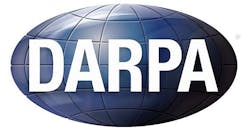DARPA issues solicitation for C2E electronic warfare program for jam-resistant stealthy communications
Officials of the U.S. Defense Advanced Research Projects Agency (DARPA) in Arlington, Va., released a broad agency announcement (DARPA-BAA-14-02) late last month for the Communication in Contested Environment (C2E) program.
Related: DARPA to brief industry 19 Dec. on C2E program to develop jamming-resistant communications
The program seeks to develop jamming-resistant communications and difficult-to-detect-communications technology to keep battlefield networks functioning amid a variety of spectrum-warfare threats. DARPA conducted industry briefings for the C2E program on 19 Dec. 2013.
Enemy technology that is designed to intercept, deny, and exploit U.S. tactical communications has advanced quickly, and poses a formidable threat to U.S. air dominance and air supremacy, DARPA officials say.
To counter this threat, U.S. military forces have improved link capacity of a wide range of data radio systems, which focus on the individual node performance. Unfortunately these advances do not address the problem of overall network performance and network pervasiveness, DARPA researchers explain. This is where the C2E program comes in.
The C2E program seeks to make networking improvements that use existing communications capabilities along with new capabilities. The program will seek to use development environments and system architectures for military communications systems that provide flexibility and capability to refresh communications capabilities similar to that of the U.S. commercial communications industry.
DARPA officials say they expect continued growth in sensor systems, unmanned systems, and networked weapon systems that will drive the need for larger, more pervasive networks. At the same time, experts also expect enemy counter-communications systems to improve.
The C2E program will ask industry for ideas in three areas: heterogeneous networking capability to improve pervasive services while accommodating legacy platform capabilities; a communication system architecture that accommodates new and improved communications capabilities; and a development environment that accommodates third-party technology and rapid capability refresh.
Related: DARPA issues solicitation for EW program to counter digitally programmable adaptive radar
Companies interested should submit abstracts no later than 21 Jan. 2014 to the DARPA Strategic Technology Office (STO) Website at https://stobaa.darpa.mil. Full proposals are due no later than 14 Feb. 2014 to the same Web address.
Email questions or concerns to DARPA at [email protected]. More information is online at https://www.fbo.gov/spg/ODA/DARPA/CMO/DARPA-BAA-14-02/listing.html.
